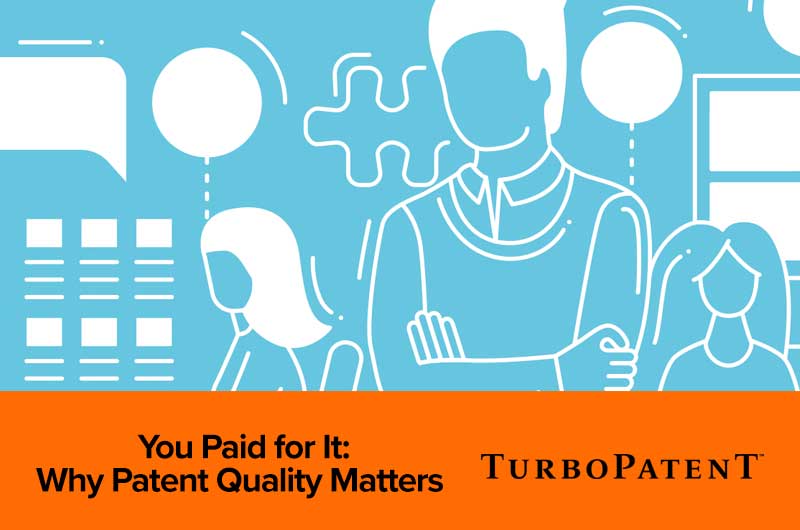You Paid for it – Why Patent Quality Matters
Patents are like insurance. They can protect you when something goes wrong. And like insurance, a low-quality patent can leave you unprotected when you need it most. But since the U.S. Patent and Trademark Office (USPTO) examines the application and is supposed to identify the mistakes in each patent application before a patent is granted, does the patent application quality really matter?
Yes, but let’s start by defining the important distinction between patent quality and patent value.
- Patent value is a business matter that includes considerations like monetization of the patent
- Patent quality refers to the formalities and substance of a patent application
The primary reason patent quality matters is that if a patent has quality issues due solely to a problem with patent formalities, then the patent can be invalidated even if its substance is directed toward a pure stroke of genius, leaving the invention (and the inventor) unprotected. This is true even for long-granted patents for which the owner has been paying maintenance fees. The USPTO makes no guarantees that an allowed patent is, in fact, enforceable. Thus, all of the time and money spent acquiring a patent can be wasted if quality issues exist with the patent formalities.
Patent formalities issues can also be a major problem during patent prosecution. When an application is being reviewed by the USPTO, poor-quality formalities can prevent the substance from ever being considered. For example, a patent application outlining a brilliant widget will still be rejected if the claims are not written using proper antecedent basis – one of many required patent formalities.
In the best-case scenario, poor-quality formalities can cause months or years of delay (and additional cost) as your patent attorney and a patent examiner communicate with one another to correct them.
In the worst-case scenario, you can lose the chance to protect your invention because the formalities are unable to be corrected.
In a nightmare scenario, the patent examiner fails to identify the formalities issues and a patent on your invention is granted. Later you find out the patent is invalid, leaving the invention unprotected and you with nothing to show for years of expenses – likely on the eve of trial.
Thus, a patent application with poor-quality formalities can leave even the most ingenious invention unprotected because, in the eyes of the USPTO, the formalities are equally as important as the substance.
Ensuring the formalities of a patent are correct requires an attorney to spend significant time as a copy editor and despite its non-technical nature of this task, it is billed the same as the time spent describing the substance of the invention.
This means clients are spending hundreds of dollars per hour for what is basically a glorified grammar check. And mistakes ALMOST ALWAYS still happen!
At TurboPatent, our Automated Invention Protection technology ensures formalities issues never appear in a patent application, allowing us to draft a better-quality application every time. And since we don’t have to worry about formalities issues, we can focus our time on accurately describing the substance of your invention.
We’ll discuss the issues typically associated with capturing the substance of an invention and how TurboPatent can help correct them in upcoming posts. Stay tuned!





